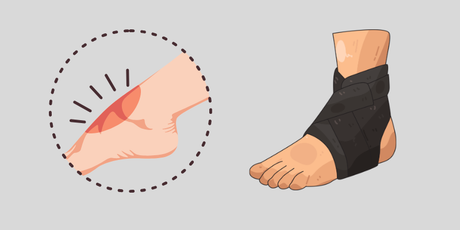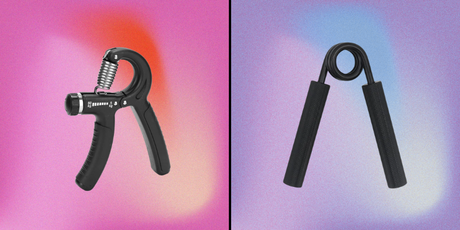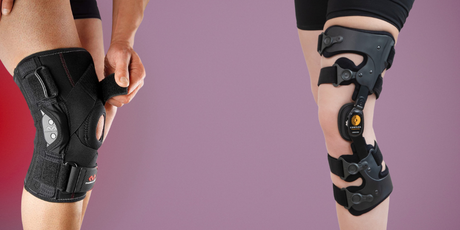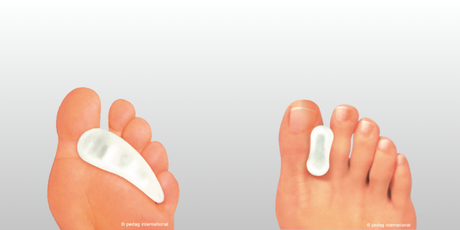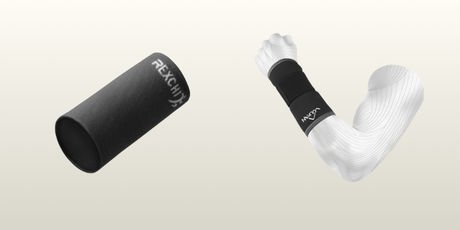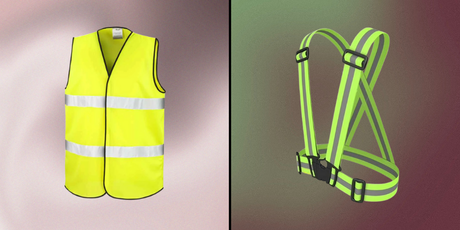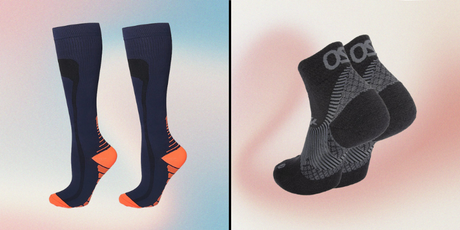Hallux rigidus is a condition that causes pain and stiffness in the metatarsophalangeal joint of the big toe, affecting the mobility of the foot. This often leads to difficulties in bending the toe or walking normally. The condition develops gradually and is usually associated with osteoarthritis that breaks down the cartilage in the joint, causing swelling and pain.
Symptoms of Hallux Rigidus
The most common symptoms of hallux rigidus include:
-
Pain and stiffness in the metatarsophalangeal joint of the big toe, especially when straining or trying to bend the toe.
-
Swelling and pain dorsally on the top of the big toe, which often worsens with physical activity.
-
limited movement of the big toe joint, making it difficult to walk or stand for long periods
-
Pseudoexostosis, or a bone growth on the top of the big toe joint, can develop and lead to further swelling and pain.
Causes of Hallux Rigidus
Hallux rigidus is most often caused by osteoarthritis of the big toe joint, which causes the cartilage in the joint to break down. This can cause stiffness, pain and swelling in the foot. Other factors that can contribute to the development of hallux rigidus include:
- Previous injury or trauma to the foot.
-
Overloading of the big toe joint during repetitive physical activity.
- Wearing tight shoes that do not provide enough room for the foot.
-
Genetic factors or biomechanical problems that affect how the foot is loaded.
Conservative treatment is often the first step and may include:
- Use of orthopaedic inserts to support and relieve the foot.
-
Roller sole shoes that can relieve stress on the big toe joint and improve mobility.
- Rehabilitation and physiotherapy to improve foot mobility and strength.
If conservative treatments do not provide sufficient relief, or if symptoms worsen, surgical options may be considered. In some cases, a partial resection of the leg may be necessary, or a fusion surgery to stabilise the joint and reduce pain.
Treatment options and Surgery
If hallux rigidus cannot be relieved by conservative treatment, surgery may be considered. Common surgical procedures include:
-
Arthrodesis (bracing) which involves bracing the big toe joint to eliminate pain.
-
Partial resection where part of the bone is removed to relieve pain and improve mobility.
- In some cases, an arthroplasty (joint replacement) may be an option to replace the damaged joint.
It is important to consult with an orthopaedic surgeon to determine the best treatment based on the severity of hallux rigidus and the patient's needs.
Prevention and Rehabilitation
To reduce the risk of developing hallux rigidus or to prevent the condition from worsening, the following preventive measures can be effective:
-
Wear the right shoes: Choose shoes with good support that allow enough room for the toes. Avoid hard and tight shoes that can aggravate pain and stiffness.
-
Use orthopaedic inserts that relieve and support the foot, especially if you have a high arch or other biomechanical problems.
-
Rehabilitation exercises to improve foot mobility and strength, as well as to relieve pain on impact.
Our products for Hallux Rigidus
We offer a wide range of products to relieve pain and provide support for hallux rigidus:
-
Roller sole shoes that provide proper support and reduce stress on the big toe joint.
-
Orthopaedic inserts and shoe inserts to provide relief and support for foot pain
-
Pain relief products, including cold and heat treatments to reduce swelling and relieve pain in the big toe joint
-
Supportive aids to improve foot function and relieve stiffness and pain.
Our range is carefully selected to provide effective relief and support for hallux rigidus, allowing you to continue with your daily activities without being hindered by pain and stiffness.




